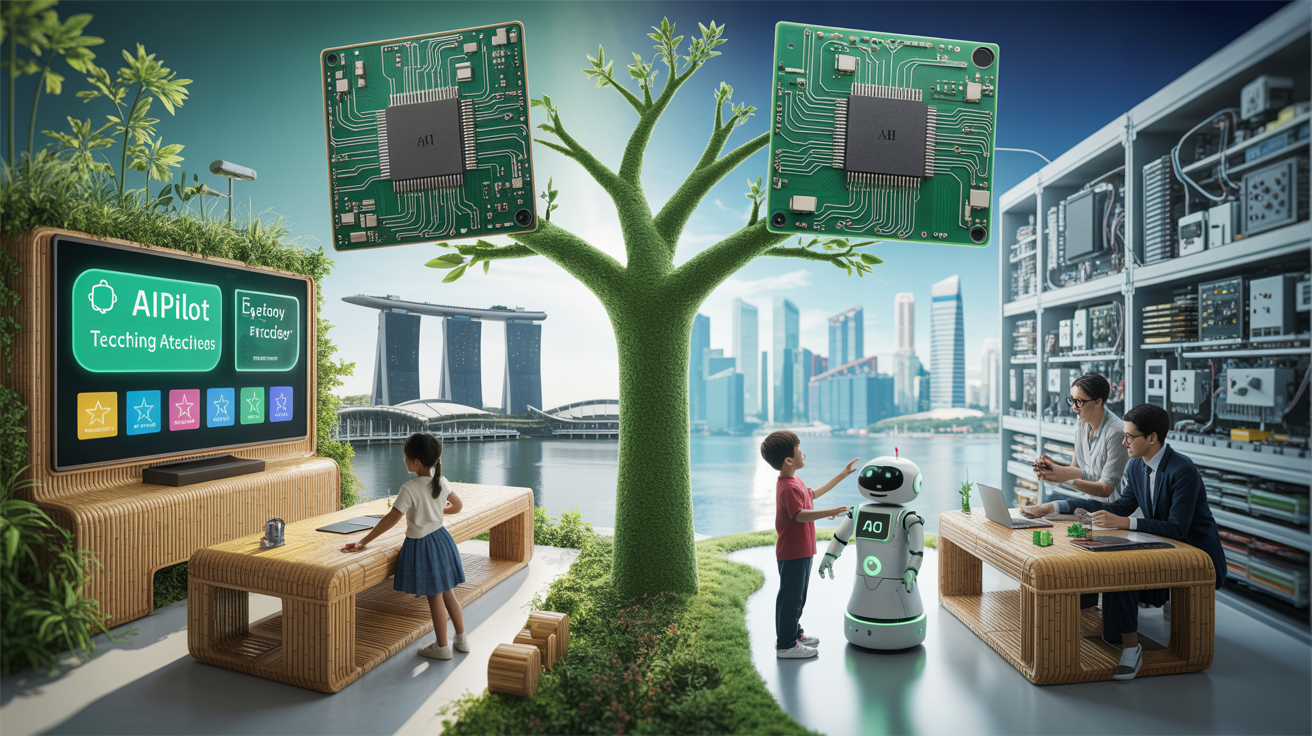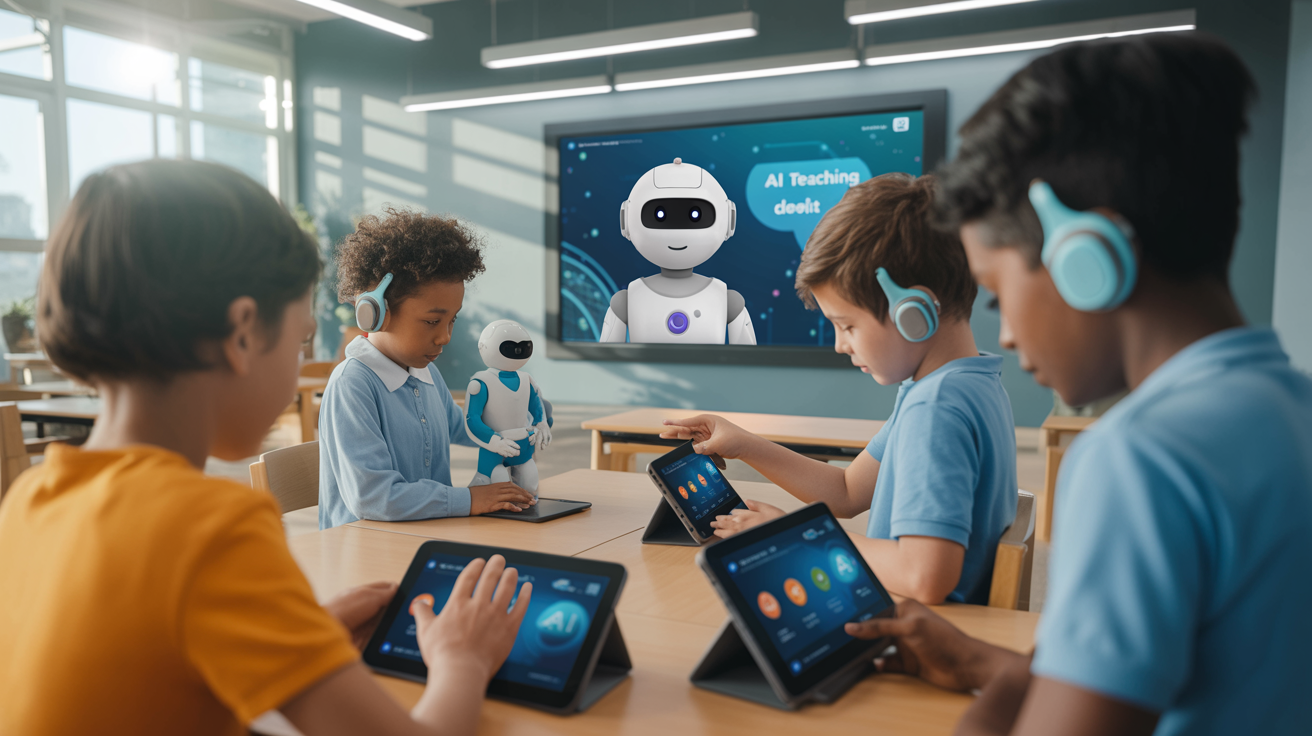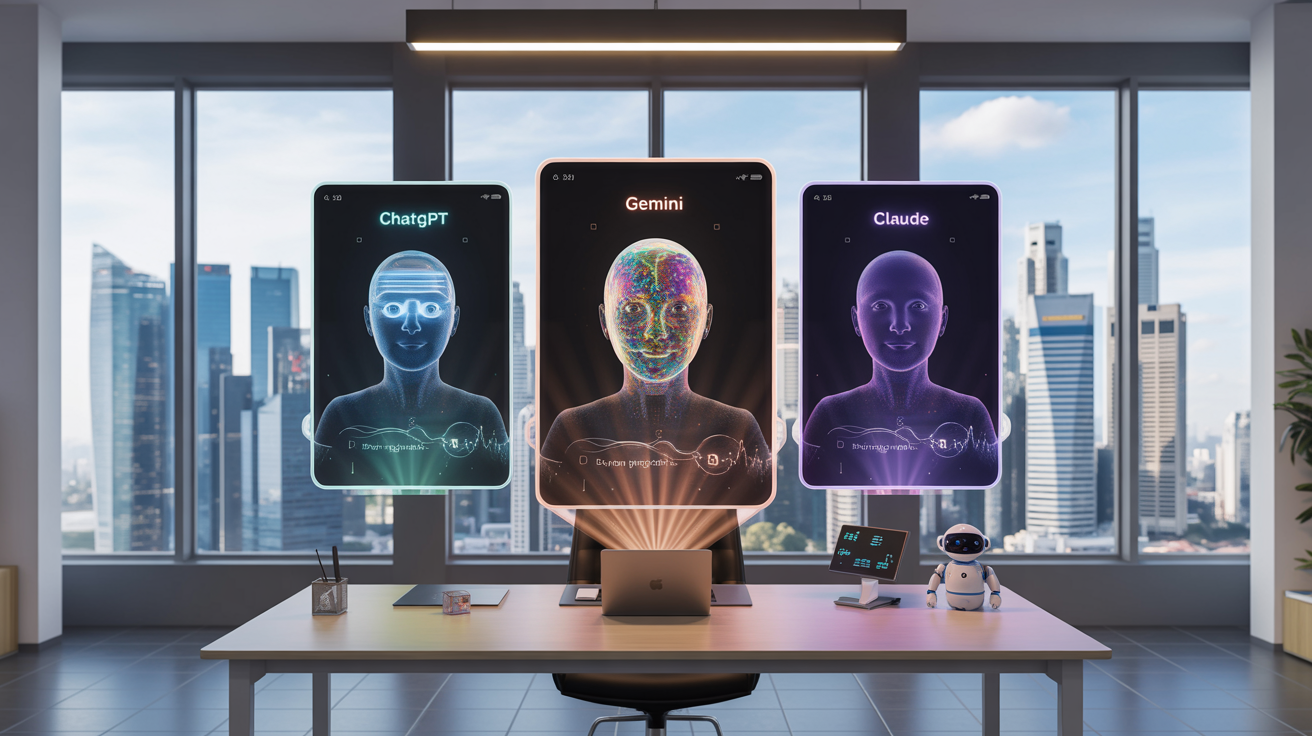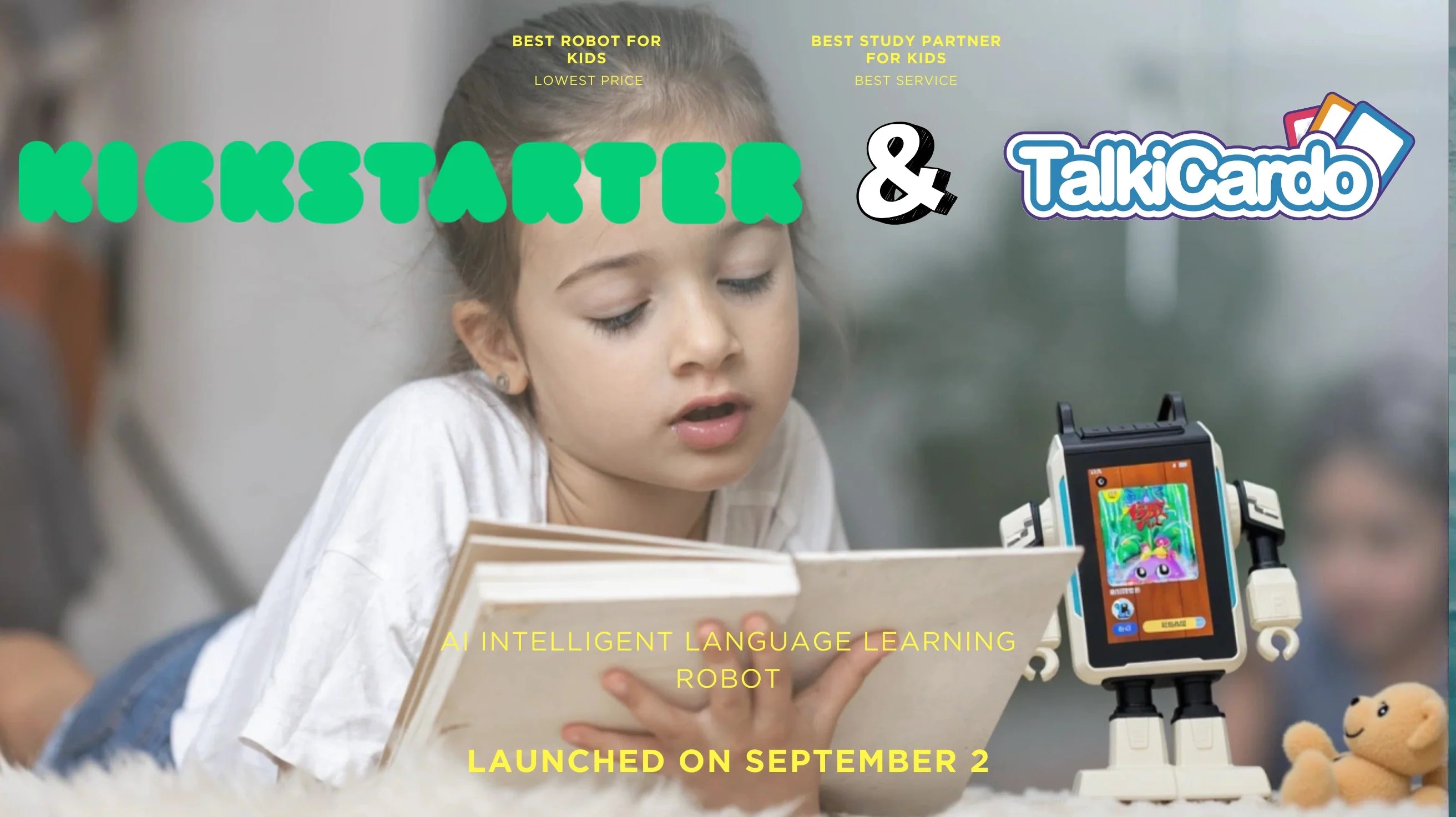
Voice Cloning & Mandarin Accent Training: Navigating Ethical Boundaries in AI Language Learning
Posted by Aipilot on
Table Of Contents
- Introduction: The Voice Cloning Revolution
- Understanding Voice Cloning Technology
- The Unique Challenges of Mandarin Accent Training
- Ethical Considerations in Voice Cloning
- Benefits for Mandarin Language Learners
- Implementing Voice Cloning Ethically in Education
- The Future of Voice Cloning in Language Education
- Conclusion: Balancing Innovation and Ethics
Voice Cloning & Mandarin Accent Training: Navigating Ethical Boundaries in AI Language Learning
Imagine speaking perfect Mandarin with the confidence of a native speaker after just weeks of practice—not years. This isn't science fiction; it's the promise of voice cloning technology applied to language learning. As artificial intelligence transforms education, voice cloning stands at the fascinating intersection of technological innovation and ethical consideration, especially when applied to complex linguistic challenges like Mandarin accent training.
For language learners, mastering the tonal subtleties of Mandarin Chinese represents one of the most formidable challenges in language acquisition. The four standard tones (plus the neutral tone) can completely change a word's meaning with the slightest pitch variation—making perfect pronunciation not just a matter of sounding authentic, but of being understood at all. Voice cloning technology offers revolutionary possibilities for accelerating this learning curve, but it also raises important questions about authenticity, cultural representation, and responsible implementation.
In this article, we'll explore how voice cloning works, its specific applications for Mandarin accent training, and the ethical lines that educators, technologists, and learners should consider. We'll navigate the balance between leveraging AI's powerful capabilities while respecting cultural nuances and individual rights. Whether you're a language educator, a student of Mandarin, or simply curious about the future of AI in education, understanding these ethical boundaries is essential as we embrace the next generation of learning tools.
Voice Cloning & Mandarin Accent Training
Navigating the Ethical Landscape of AI in Language Learning
Voice Cloning Technology
AI systems analyze speech patterns, tones, and inflections to create digital voice models that can generate new speech in the original speaker's voice—even for content they've never spoken.
Mandarin's Unique Challenges
Four tones can completely change word meanings, making pronunciation not just about sounding authentic but being understood. Traditional methods often fall short in addressing these tonal complexities.
Key Ethical Considerations
Voice cloning raises important questions about consent, voice ownership, cultural authenticity, and potential misuse that must be addressed through thoughtful implementation.
Benefits for Learners
- Personalized practice with immediate feedback
- Contextualized learning beyond rote repetition
- Reduced anxiety in a judgment-free environment
Ethical Implementation
- Transparency and informed consent
- Diverse representation of speakers
- Complementary to human interaction, not replacement
The Future of Voice Cloning in Language Education
Emotion Modeling
Next-gen systems capturing emotional nuances for authentic interactions
Multimodal Systems
Voice cloning with visual elements like realistic digital avatars
Adaptive Learning
Algorithms that analyze patterns to create personalized practice materials
Balancing Innovation and Ethics
The path forward requires balanced approaches that leverage technological capabilities while respecting human dignity and cultural integrity.
Explore AIPILOT's Ethical AI SolutionsCreated by AIPILOT - Transforming language learning through ethical AI innovation
Understanding Voice Cloning Technology
Voice cloning technology represents one of the most remarkable developments in artificial intelligence. At its core, voice cloning uses deep learning algorithms to analyze and replicate human speech patterns, tones, inflections, and emotional nuances. The technology captures the unique characteristics that make each person's voice distinctive and creates a digital model capable of generating new speech that sounds remarkably like the original speaker.
The process typically begins with collecting voice samples from a speaker—reading various texts designed to capture a wide range of phonetic sounds and tonal variations. For languages like Mandarin, these samples need to be particularly comprehensive to capture the language's tonal complexity. Advanced neural networks then analyze these samples, identifying patterns in pitch, rhythm, timbre, and articulation.
Once the voice model is created, it can generate speech for any text input, effectively allowing the AI to "speak" words the original person never actually said, but in their voice. Modern systems can achieve this with surprisingly small amounts of training data—sometimes as little as a few minutes of recorded speech—though more samples generally produce better results.
The applications extend far beyond novelty voice changers. In language learning contexts, voice cloning can create personalized tutors that demonstrate perfect pronunciation while maintaining a voice the learner finds relatable or engaging. For Mandarin specifically, the technology can isolate and emphasize tonal patterns that non-native speakers often struggle to distinguish, providing targeted practice for these challenging aspects.
The Unique Challenges of Mandarin Accent Training
Mandarin Chinese presents distinctive challenges that make it particularly suited for—and in need of—innovative technological approaches to accent training. Unlike many Western languages, Mandarin is tonal, meaning the pitch pattern used to pronounce a syllable affects its meaning. The classic example is the syllable "ma," which can mean "mother," "hemp," "horse," or "scold" depending on which of the four tones is used.
Beyond tones, Mandarin features several sounds that simply don't exist in languages like English, including specific consonants and vowel combinations that require precise tongue and mouth positioning. The rhythm and cadence of Mandarin speech also differs significantly from Germanic and Romance languages, creating another hurdle for learners.
Traditional learning methods often fall short in addressing these challenges. Textbooks can't demonstrate sounds, and even video tutorials can't provide personalized feedback. Human tutors are valuable but limited in availability and consistency—they can't be available for practice at 3 AM or provide the same energy level in every session. Additionally, many learners experience anxiety when practicing with native speakers, fearing judgment or embarrassment over pronunciation mistakes.
These unique challenges make Mandarin a perfect candidate for voice cloning technology. AI systems can demonstrate perfect pronunciation repeatedly without fatigue, provide immediate feedback on a learner's attempts, and offer a judgment-free environment for practice. The technology can isolate specific tonal patterns that a particular student struggles with, creating targeted exercises that would be difficult to implement in traditional classroom settings.
Ethical Considerations in Voice Cloning
As with many AI technologies, voice cloning's capabilities bring significant ethical questions that must be addressed thoughtfully, especially in educational contexts. These considerations become particularly important when dealing with languages that carry strong cultural identities, like Mandarin Chinese.
Consent and Voice Ownership
Perhaps the most fundamental ethical question surrounds consent and voice ownership. A person's voice is deeply personal—a part of their identity that has traditionally been inseparable from their physical presence. Voice cloning challenges this connection, raising questions about who owns a voice once it's been digitized and modeled.
For educational applications, obtaining explicit consent from voice donors is essential. This includes clear communication about how their voice will be used, who will have access to it, how long it will be retained, and whether they can revoke permission. Ethical implementation requires respecting voice donors as collaborators in the educational process rather than merely as data sources.
Companies developing these technologies must establish transparent policies that respect voice ownership rights. This might include compensation for voice actors or native speakers who contribute their voices to educational platforms, as well as careful consideration of posthumous voice use—an increasingly relevant concern as digital legacies become more complex.
Cultural Authenticity and Representation
Language is inseparable from culture, and Mandarin particularly carries thousands of years of cultural context. When creating voice cloning systems for language learning, developers must consider whether their implementation respects the cultural authenticity of the language being taught.
This raises important questions about representation: Are diverse native Mandarin speakers included in the voice models? Does the system acknowledge regional variations and accents rather than presenting a single "correct" way of speaking? Does the content generated by cloned voices accurately reflect Chinese cultural contexts and avoid stereotypes?
Ethical implementation requires collaboration with native speakers and cultural experts throughout development. It also means acknowledging the limits of technology—no AI system can fully capture the cultural nuances of language use that come from lived experience. The goal should be supportive learning tools, not replacements for genuine cultural exchange.
Potential for Misuse and Safeguards
Voice cloning technology can be misused in concerning ways, from creating convincing deepfakes to enabling sophisticated scams or impersonation. Even in educational contexts, there's potential for inappropriate applications, such as students using cloned voices of teachers or peers for deceptive purposes.
Responsible development requires implementing safeguards against misuse. This might include watermarking generated audio, developing detection systems for cloned voices, limiting the contexts in which cloning can be used, and creating clear terms of service that prohibit harmful applications.
Educational platforms have a particular responsibility to model ethical use of these technologies. This includes teaching students about the capabilities and limitations of AI systems, promoting critical thinking about digital media, and establishing clear guidelines for appropriate use within learning environments.
Benefits for Mandarin Language Learners
Despite the ethical considerations, voice cloning offers tremendous potential benefits for Mandarin language learners when implemented responsibly. These advantages directly address many of the traditional pain points in language acquisition.
Personalized practice becomes possible at an unprecedented scale. Learners can hear perfect pronunciations of challenging words or phrases as many times as needed, at any time of day, without inconveniencing a human tutor. More importantly, they can receive immediate feedback on their own pronunciation attempts, with AI systems identifying specific issues like incorrect tones or imprecise consonant sounds.
The technology also enables contextualized learning that goes beyond rote repetition. Advanced systems can generate natural conversational exchanges about topics relevant to the learner's interests or needs, making practice more engaging and applicable to real-world situations. For business professionals learning Mandarin for work, this might mean practicing industry-specific terminology in realistic scenarios.
Perhaps most significantly, voice cloning can reduce the anxiety many learners experience when practicing a new language. The fear of judgment or embarrassment often inhibits practice with native speakers, but AI systems provide a safe environment where mistakes become learning opportunities rather than sources of shame. This psychological safety can dramatically accelerate learning progress.
At AIPILOT's TalkiCardo platform, these benefits are implemented through safe, efficient communication tools designed specifically for language learners, with special attention to creating comfortable learning environments that support psychological well-being throughout the learning journey.
Implementing Voice Cloning Ethically in Education
Creating ethical voice cloning systems for Mandarin accent training requires thoughtful implementation at every stage of development and use. Here are key principles for educational institutions and technology developers to consider:
Transparency and informed consent should be foundational. Users should understand when they're interacting with cloned voices rather than recordings of real people. Similarly, those whose voices are cloned should provide explicit consent based on clear information about how their voice will be used.
Diverse representation matters significantly in language learning. Ethical systems should incorporate voices from various regions, age groups, and gender identities to reflect the true diversity of Mandarin speakers. This helps learners understand regional variations and prevents reinforcing a single "standard" that may erase linguistic diversity.
Complementary, not replacement approaches work best. Voice cloning technology should be positioned as a supplement to—not a replacement for—human interaction in language learning. The technology excels at providing consistent practice opportunities, but cultural understanding and contextual language use still benefit tremendously from human exchange.
Regular ethical review processes help ensure ongoing responsible use. As capabilities evolve rapidly, educational institutions should establish ethics committees that periodically review how voice cloning technologies are being used in their programs, considering feedback from students, teachers, and voice donors.
Educational institutions should also develop clear guidelines for appropriate use, helping students understand both the capabilities and limitations of these technologies. This includes fostering critical thinking about the digital content students encounter and creating classroom norms that respect the rights and dignity of all language speakers.
The Future of Voice Cloning in Language Education
The landscape of voice cloning technology is evolving rapidly, with several promising developments on the horizon that could transform Mandarin accent training even further. Understanding these trends helps educators and learners prepare for what's coming and participate in shaping ethical implementation.
We're likely to see increasingly sophisticated emotion and context modeling in voice cloning systems. Beyond simply replicating speech sounds, next-generation systems will better capture the emotional nuances that characterize natural language use—excitement, hesitation, empathy, humor—making interactions feel more authentic and helping learners understand the emotional dimensions of language.
Multimodal learning systems will combine voice cloning with visual elements like realistic digital avatars that display appropriate facial expressions and gestures while speaking. This addresses a significant limitation of current audio-only systems, as facial movements and body language provide important contextual cues in language comprehension.
Adaptive learning algorithms will become more sophisticated, analyzing patterns in a learner's progress to identify specific pronunciation challenges and automatically generate customized practice materials targeting those areas. These systems might detect, for instance, that a particular learner consistently struggles with the third tone in Mandarin and create specialized exercises focusing on that specific challenge.
As these capabilities develop, the line between technological assistance and authentic human interaction may blur further. This makes ongoing ethical discussion even more essential, with input needed from diverse stakeholders including language educators, students, native speakers, technologists, and ethicists to guide responsible development.
The most promising future lies not in technology alone, but in thoughtfully integrated systems that combine the consistency and personalization of AI with the cultural knowledge and adaptive understanding of human teachers. At AIPILOT, this balance guides our approach to developing next-generation language learning tools.
Conclusion: Balancing Innovation and Ethics
Voice cloning technology stands at a fascinating crossroads of opportunity and responsibility in language education, particularly for complex languages like Mandarin Chinese. The potential benefits for learners are substantial—personalized practice, reduced anxiety, accelerated mastery of challenging tones, and contextual learning that traditional methods struggle to provide.
Yet these benefits come with significant ethical considerations that cannot be overlooked. Questions of voice ownership, consent, cultural authenticity, representation, and potential misuse require thoughtful attention from everyone involved in developing and implementing these technologies.
The path forward requires neither uncritical embrace nor fearful rejection of voice cloning in language education. Instead, we need balanced approaches that leverage technological capabilities while respecting human dignity and cultural integrity. This means ongoing dialogue between technologists, educators, ethicists, and language communities to establish and refine best practices.
For learners of Mandarin, voice cloning offers an unprecedented opportunity to master one of the world's most challenging yet rewarding languages with greater efficiency and confidence. When implemented ethically, these technologies can help break down barriers to global communication and understanding—a goal worth pursuing with both enthusiasm and care.
The ethical lines in voice cloning for language learning aren't fixed boundaries but evolving conversations that shape how we integrate powerful new capabilities into educational contexts. By participating thoughtfully in these conversations, we can help ensure that technology serves human learning goals while respecting the rich cultural heritage embodied in languages like Mandarin Chinese.

















































